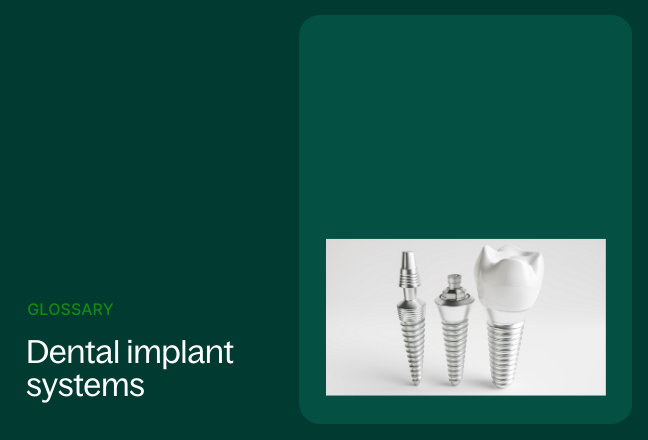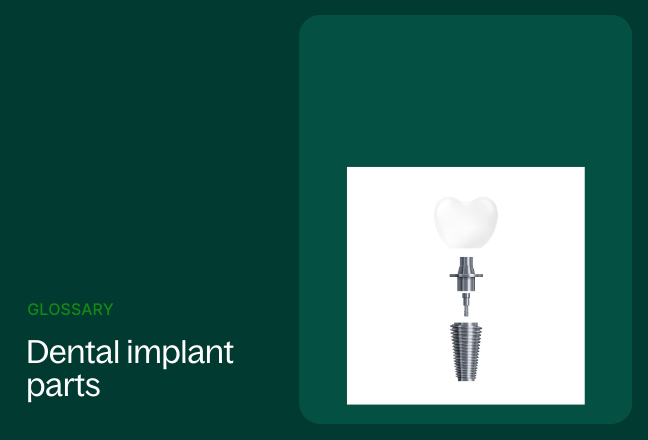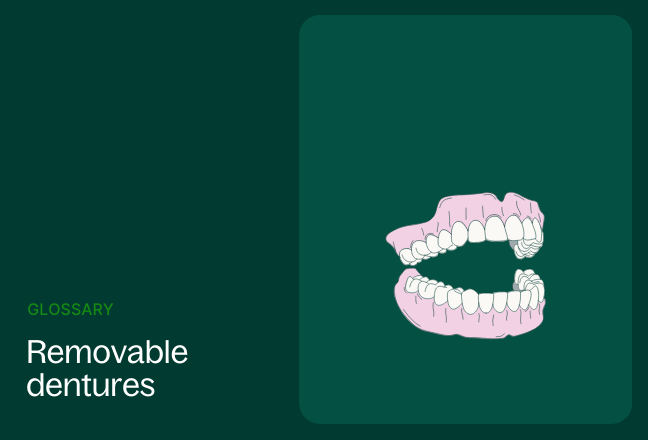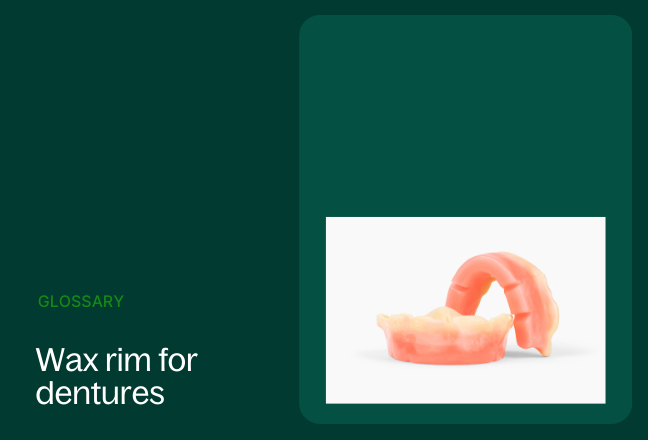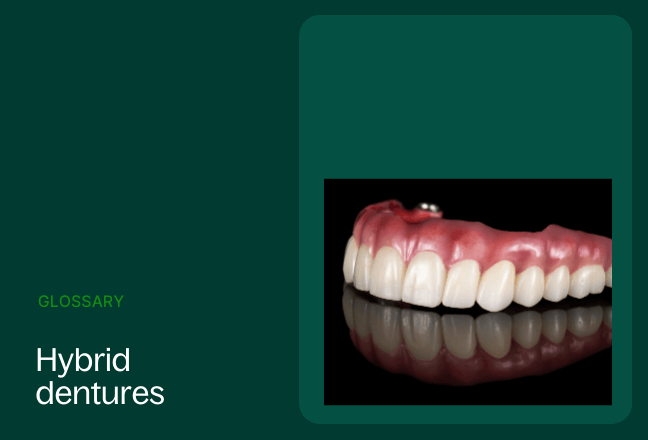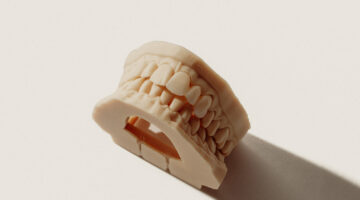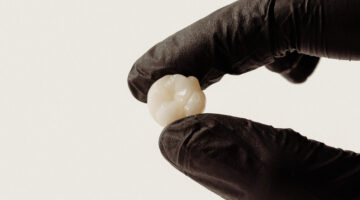Chances are every single person in America will have a crown placed at some point in their life. Some crowns may be able to be bonded to the patient’s tooth but in the case of too much tooth decay, crowns will need to be paired with a dental implant. We’re going to dive into implant crowns, looking into their benefits, how they are installed, why they are more durable than other options, and the impact they have on existing teeth.
What is an implant crown?
An implant crown is a type of dental restoration that is used to replace a missing or damaged tooth. It is a cap that is attached to a dental implant, which is a surgical post that is inserted into the jawbone. The implant crown restores the function and appearance of the missing tooth.
An implant crown consists of two main components:
- Abutment: The abutment is a small connector that is attached to the dental implant. It acts as a bridge between the implant and the crown.
- Crown: The crown is the visible part of the implant restoration. It is made to look and function like a natural tooth.
Implant crown materials
Implant crowns can be made out of multiple different materials including zirconia, eMax, porcelain fused with metal (PFM), and gold. Each material offers distinct benefits for a patient’s needs.
Zirconia
Zirconia is a versatile and highly desirable material for implant crowns due to its exceptional properties and suitability for a wide range of dental applications. Here are some compelling reasons why zirconia should be considered for implant crowns:
- Superior strength and durability: Zirconia is renowned for its exceptional strength and resistance to wear and tear. This makes it an ideal choice for implant crowns, especially for posterior teeth that bear more significant biting forces.
- Biocompatibility and reduced risk of allergies: Zirconia is highly biocompatible with the human body, making it an excellent option for patients with metal allergies or sensitivities. Unlike traditional metal-ceramic crowns, zirconia crowns do not trigger allergic reactions or gum tissue irritation, ensuring a comfortable and well-tolerated restoration.
- Natural aesthetics and seamless integration: Zirconia’s translucent properties allow it to mimic the natural appearance of teeth. The crown can be customized to match the exact color, shape, and shade of your patient’s surrounding teeth, resulting in a natural-looking smile that enhances your patient’s overall appearance.
- Metal-free design and elimination of dark gum lines: Zirconia implant crowns are completely metal-free, eliminating the potential for dark gum lines or metal discoloration. This is particularly beneficial for patients with thin gum tissue or those who prefer a more natural-looking restoration.
- Reduced risk of peri-implant infections: Zirconia’s smooth surface is less prone to bacterial adhesion, reducing the risk of peri-implant infections. This is crucial for maintaining implant health and long-term stability.
- Long-term longevity: Zirconia implant crowns are known for their exceptional longevity, often lasting for many years with proper care and maintenance.
Zirconia crown best use cases
Zirconia crowns are versatile and suitable for a wide range of dental applications. Here are some specific instances where zirconia crowns are particularly beneficial:
- Posterior teeth replacement: Zirconia crowns are an excellent choice for replacing posterior teeth, particularly those subjected to significant biting forces. Their strength and durability make them well-suited for these demanding areas.
- Patients with metal allergies or sensitivities: For patients with metal allergies or sensitivities, zirconia crowns offer a metal-free alternative that eliminates the risk of allergic reactions or gum tissue irritation.
- Aesthetically demanding situations: Zirconia crowns are ideal for patients seeking a natural-looking tooth replacement solution. Their ability to mimic the natural appearance of teeth enhances aesthetics and blends seamlessly with surrounding teeth.
- Patients with thin gum tissue: Zirconia crowns are a good option for patients with thin gum tissue as they eliminate the risk of dark gum lines and metal discoloration.
- High-Risk Patients for Peri-Implant Infections: Zirconia crowns are beneficial for patients at higher risk of peri-implant infections due to their smooth surface that reduces bacterial adhesion.
eMax
eMax, also known as lithium disilicate, is a highly regarded material for implant crowns due to its exceptional properties and suitability for a wide range of dental applications. Here are some compelling reasons why eMax should be considered for implant crowns:
- Superior aesthetics and natural appearance: eMax is renowned for its ability to mimic the natural appearance of teeth, making it an excellent choice for implant crowns. Its translucent properties allow light to pass through the crown, replicating the natural light transmission of dentin, the tooth’s inner layer. This results in a crown that blends seamlessly with surrounding natural teeth, creating a natural-looking smile.
- High strength and durability: eMax is a strong and durable material, making it suitable for implant crowns that need to withstand significant biting forces. While not as strong as zirconia, eMax offers sufficient strength for most applications, particularly for anterior teeth that are less subjected to wear and tear.
- Biocompatibility and reduced risk of allergies: eMax is highly biocompatible with the human body, making it an ideal option for patients with metal allergies or sensitivities.
- Conservative tooth preparation: eMax crowns require minimal preparation of the underlying tooth structure, preserving healthy tooth tissue. This is particularly beneficial for patients with limited tooth structure or those who want to minimize tooth damage.
- Bonding strength and secure attachment: eMax crowns can be bonded to the implant abutment with a strong and reliable adhesive, ensuring a secure and stable attachment. This prevents the crown from loosening or falling off over time.
eMax crowns best use cases
eMax crowns are versatile and suitable for a wide range of dental applications. Here are some specific instances where eMax crowns are particularly beneficial:
- Anterior teeth replacement: eMax crowns are an excellent choice for replacing anterior teeth, particularly those in the smile zone. Their superior aesthetics and natural appearance enhance the overall aesthetics of the smile.
- Patients with metal allergies or sensitivities: For patients with metal allergies or sensitivities, eMax crowns offer a metal-free alternative that eliminates the risk of allergic reactions or gum tissue irritation.
- High Aesthetic Demands: eMax crowns are ideal for patients seeking the most natural-looking tooth replacement solution. Their ability to mimic the natural appearance of teeth is unmatched by other materials.
- Minimally invasive procedures: eMax crowns require minimal tooth preparation, making them a good option for patients who prefer a more conservative approach to tooth restoration.
- Secure attachment and long-term stability: eMax crowns are securely bonded to the implant abutment, ensuring long-term stability and preventing crown loosening or loss.
Porcelain fused to metal (PFM)
Porcelain fused to metal (PFM) is a type of dental crown that combines the strength of metal with the aesthetics of porcelain. It has been used for many years and is still a popular choice for implant crowns. Here are some reasons why an implant crown should be made of porcelain fused to metal:
- Strength and durability: PFM crowns are very strong and durable, making them ideal for implant crowns that need to withstand significant biting forces. The metal substructure provides the strength and support, while the porcelain layer provides a natural-looking appearance.
- Biocompatibility: PFM crowns are made of biocompatible materials that are well-tolerated by the body. This is important for implant crowns, which need to be well-integrated with the surrounding bone and gums.
- Aesthetics: PFM crowns can be made to match the color and shape of your patient’s surrounding teeth, resulting in a natural-looking smile. The porcelain layer can be customized to achieve the desired level of translucency and brightness.
- Cost-effectiveness: PFM crowns are more affordable than some other types of implant crowns, such as all-zirconia crowns.
PFM crown best use cases
PFM crowns are versatile and suitable for a wide range of dental applications. Here are some specific instances where PFM crowns are particularly beneficial:
- Posterior teeth: PFM crowns are a good choice for replacing posterior teeth, such as molars and premolars. These teeth are subjected to more biting forces than anterior teeth, so it is important to choose a crown that is strong and durable.
- Patients on a budget: PFM crowns are a more affordable option than some other types of implant crowns.
- Patients who want a natural-looking smile: PFM crowns can be made to match the color and shape of your patient’s surrounding teeth, resulting in a natural-looking smile. This makes them a good choice for patients who are concerned about their appearance.
Gold
Gold has been used in dentistry for centuries due to its unique properties, making it an excellent choice for implant crowns. Here are some compelling reasons why gold should be considered for implant crowns:
- Superior strength and durability: Gold is one of the strongest and most durable materials available for dental crowns. It is highly resistant to wear and tear, even when subjected to significant biting forces.
- Biocompatibility and reduced risk of allergies: Gold is a highly biocompatible material, meaning it is well-tolerated by the body and unlikely to cause allergic reactions or gum tissue irritation. This makes it a suitable option for patients with metal allergies or sensitivities.
- Long-term longevity: Full gold crowns are known for their exceptional longevity, often lasting for many years with proper care and maintenance.
- Conservative tooth preparation: Gold crowns require minimal preparation of the underlying tooth structure, preserving healthy tooth tissue. This is particularly beneficial for patients with limited tooth structure or those who want to minimize tooth damage.
- Versatile aesthetics: Gold crowns can be customized to match the color and shade of surrounding natural teeth, resulting in a natural-looking smile. They can also be designed to have a more traditional gold appearance, if desired.
Gold crown best use cases
Gold crowns are versatile and suitable for a wide range of dental applications. Here are some specific instances where gold crowns are particularly beneficial:
- Patients with metal allergies or sensitivities: For patients with metal allergies or sensitivities, gold crowns offer a safe and reliable solution for tooth replacement.
- High-risk patients for peri-implant infections: Gold’s smooth surface is less prone to bacterial adhesion, reducing the risk of peri-implant infections. This is crucial for maintaining implant health and long-term stability.
- Patients with limited tooth structure: Gold crowns require minimal preparation of the underlying tooth structure, making them a good option for patients with limited tooth structure.
- Patients seeking a traditional gold appearance: Some patients prefer the look of a visible gold crown.
How long do implant crowns last?
Implant crowns can last for many years with proper care and maintenance. On average, implant crowns last between 10 and 15 years. However, some implant crowns can last for up to 25 years or more.
The lifespan of an implant crown depends on a number of factors, including:
- The type of material used: Some materials, such as gold and zirconia, are more durable than others, such as porcelain fused to metal.
- The quality of the workmanship: The skill and experience of the dentist who places the implant crown can also affect its lifespan.
- The patient’s oral hygiene: Patients who practice good oral hygiene and see their dentist for regular checkups and cleanings are more likely to have implant crowns that last longer.
- The patient’s bite: Patients with a strong bite or who grind their teeth are more likely to damage their implant crowns.
How implant crowns are retained in the mouth
There are three main ways that dental implant parts are retained in the mouth:
Screw retention: A screw is threaded into the implant fixture to hold the abutment and crown in place. This is the most common type of implant retention because it is strong and secure. It is also relatively easy to place and remove, which is helpful if the implant needs to be repaired or replaced.
Cement retention: Cement is used to bond the abutment and crown to the implant fixture. It is less common than screw retention, but cement retention can be a good option for patients with limited bone height or who have difficulty with screws. Cement retention is also a good option for patients who want a more natural-looking restoration, as the cement can be used to create a smooth transition between the implant and the surrounding teeth.
Friction retention: The abutment and crown are designed to fit tightly over the implant fixture, creating a friction-based retention. This is the least common type of implant retention, but it can be a good option for patients with limited space in their mouth or who have difficulty with screws or cement. Friction retention is also a good option for patients who want a more conservative restoration, as it requires less tooth preparation.
Which type of retention is best for your patient will depend on their individual needs and circumstances.
How implant crowns are used
Implant crowns are used to replace missing or damaged teeth. They are attached to dental implants, which are surgical posts that are inserted into the jawbone. Implant crowns are used to restore the function and appearance of a missing tooth, to improve chewing and speaking ability, to prevent the shifting of surrounding teeth, to maintain bone density in the jaw and to enhance the overall smile.
- The installation of an implant crown can be a collaboration between a dentist and an oral surgeon. Recently technology like intraoral scanners and 3D printed surgical guides have give general dentists more confidence in the outcome of an implant procedure.
- It is up to the dentist to determine the best material to use for the dental implant crown.
- It is up to the dentist to determine the best retention style and abutments for the implant crown.
We hope this information gives you a good introduction or refresh into implant crowns with an understanding of the different options for your patients.

